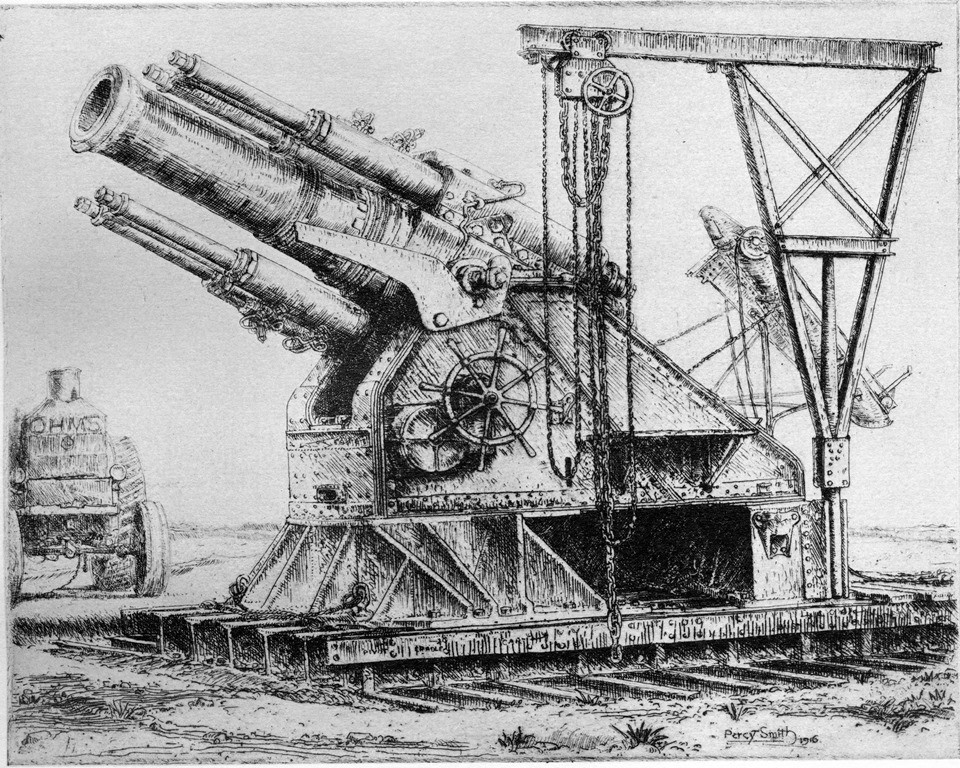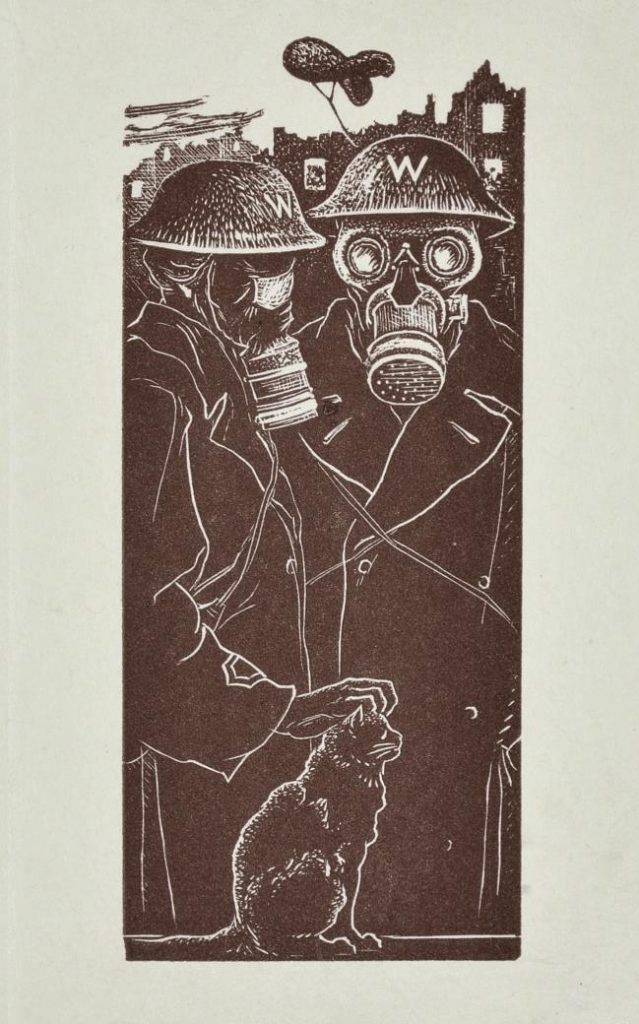Visitors to Cliffe Castle may have noticed a rather striking exhibition on the Bracewell Smith Hall balcony area. Currently on loan to us are a collection of works by Percy Delf Smith from the Percy Smith Foundation. Much of the exhibition focuses on the work inspired by his experiences in World War One, including the compelling ‘Dance of Death’
Peter Delf from the foundation kindly agreed to write a blog post to give an added insight into a fascinating artist. Peter writes:
Percy Smith was a craftsman and very versatile artist, largely self-taught. He was a lecturer in calligraphy and typography, producing illustrations for manuscript books. This led him to produce his own printers’ flowers, printers’ marks, fleurons, initial letters, borders and head and tail pieces. At a one-man exhibition of his in 1922 his work was noticed by Harold Curwen and Curwen Press became a customer, followed by a number of other printers, such as Cape, Kynoch Press and Heinemann.
The 1914 war, in which he served as a gunner on the huge 15” Howitzer gun, led him to undertake a series of etchings but he became deeply engrossed in lettering again directly it ended, because of the widespread demand for war memorials. One of these, the Canadian memorial at Vimy Ridge – engaged him and his studio for nearly four years.

Other buildings in which his inscription work may be found would necessitate a long list, but internal signage for the BBC at Broadcasting House, the Royal Institute of British Architects headquarters, the National Museum of Wales, the Courts of Justice at Allahabad, as well as buildings in Canada and the USA should be mentioned. He wrote several excellent handbooks on lettering. He also created an illuminated edition of the Hippocratic Oath for the Institute of British Dentistry.
He had no wish to have a large practice and become an administrator; he liked his chosen work too much; so he actively encouraged his assistants to set up on their own and maintained the most friendly relations with them, often calling on them for work from time to time.
He was commissioned by Frank Pick of London Underground to develop a ‘petit-serif’ variation of the standard sans- serif Johnston typeface. The Johnston Delf-Smith typeface was originally used for the London Underground Headquarters building in 1928 at 55 Broadway, St James, London and can still be seen there today. The same type of lettering was subsequently used on the extension of the Piccadilly line from Finsbury Park to Cockfosters, and elsewhere.
Percy Smith’s wife, Ellen Delf, established the Botany Department at Westfield College, London. During WW1, she worked at the Lister Institute, researching nutrition for the armed forces. They were married in 1928. He incorporated the name Delf into his name in 1939, perhaps a mark of respect for her own innovative work as a botanist and professor at Westfield College, London.
Both traveled frequently and extensively in Europe. Ellen traveled to South Africa to help improve nutrition for the African population. Percy traveled to the US and built up lifelong connections. After they married they traveled to Italy and Palestine, where the artist continued to draw extensively. A habit he maintained throughout his life.
During WWW2 he enrolled as an Air Raid Warden. Dr Ellen Delf Smith is seen here with her husband at the outset of World War 2, wearing gas masks. This drawing had been intended for a book but it remained unpublished. She loved cats and so it was decided the cat should be included.

In 1940 he was elected Master of the Art Workers Guild, became a member of the Royal Society of Arts Faculty for The Royal Designers of Industry. He became Master of this Faculty between 1943 and 1945. He taught wounded Soldiers at Mill Hill Hospital and Shenley in Hertfordshire, he executed the RSA’s loyal addresses to their Royal Majesties King George V, Queen Mary, King Edward VIII and King George VI on his accession and for his Silver Wedding Anniversary.
Also during World War 2 he was commissioned to produce a number of commemorative plaques for Warship Week, presented to towns and communities that raised huge sums of money to replace ships lost in battle. Each town or community ‘adopted’ a warship, with a matching plaque for each. Keighley raised £1.3 million in their Warship Week and adopted HMS Marne, a destroyer.
War and Peace: The Art of Percy Smith is on at Cliffe Castle until the 25th November.